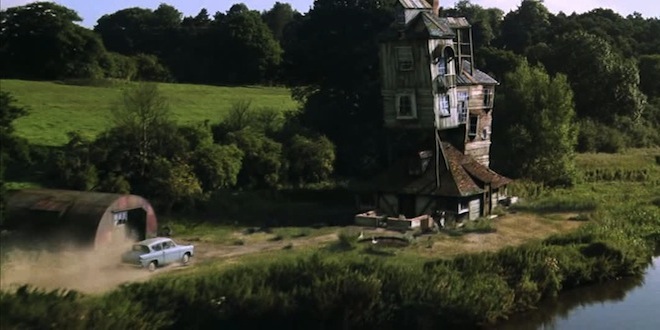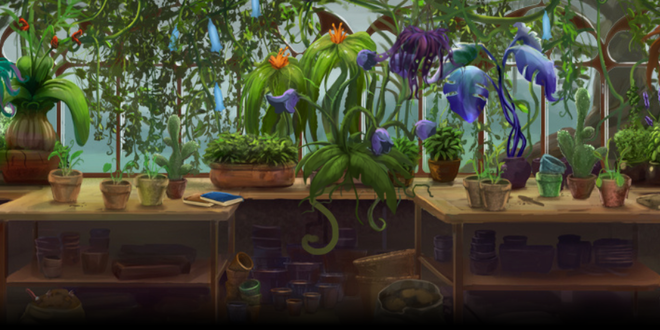Gardens of “Harry Potter”: Five Wizard Gardens and How to Create Your Own Magical Green Spaces
The world of Harry Potter doesn’t just bring us a world full of quirky characters and cool creatures. It also brings some amazing places, from Hogwarts to Diagon Alley. And in those places, we see how the world of magic brings out the best of green spaces too – with magical plants and untamed greenery that add so much vibrancy to this hidden world. So what’s so magical about the gardens of Harry Potter? And how can we bring a bit of that magic into our own green spaces?
1. The Burrow
The Burrow is the quintessential magical garden we see in Harry Potter. It’s a large, sprawling garden/farm space that adds to the cozy vibes of the Weasley family home. Some of the magic we see in this space is the Flutterby Bushes and of course the iconic garden gnomes that require de-gnoming every so often. And while traditional gardens may seem like they require constant polishing and perfection, the Burrow shows us that a sprawling garden full of life is just as good as something manicured and perfect. To bring some of that Burrow vibrancy to your own garden, why not scatter some bulbs around the garden beds? You’ll get beautiful, fun plants popping up in the springtime, bringing life and vibrance to any garden.

2. Hogwarts Greenhouses
The Hogwarts greenhouses are a hub for all things weird and wonderful. These greenhouses have a lot to teach Hogwarts students about the magical properties of plants, and rare specimens such as Snargaluffs and the Venomous Tentacula are housed here. It also shows us how useful plants can be for medicinal purposes, as we see with the mandrakes bringing back the Petrified victims of the Basilisk. Greenhouses have always been a useful feature for gardens since you can create your own climate and grow some exotic or rare species for your area. It also goes to show that you can create a garden environment anywhere – what about creating a garden in a shower or using a damp corner of your basement to grow your own mushrooms? It’s all about utilizing the spaces you’ve got and bringing them to life.

3. The Lovegoods’ House
There are many weird and wonderful things about the Lovegoods’ house, and one of them is its garden. It is unapologetically magical, with weird varieties of plants such as Dirigible Plums decorating the space. As we find out, this is also a working garden or kitchen garden since the Lovegoods grow edible plants like Gurdyroot to use in tea (maybe not so successfully, but it’s the thought that counts). This garden proves that green spaces can inspire curiosity and nurture an awareness of the biodiversity of our world. A great way to create your own kitchen garden is with a vertical garden system, which gives you the ability to grow herbs and small vegetables on your balcony or a sunny kitchen wall. It’s a living space, home décor, and wallet-saver all in one!

4. Neville’s Plant Collection
Let’s head back to Hogwarts to look at one of our favorite Herbology nerds – Neville Longbottom. As evidenced by his penchant for unusual magical plants such as the Mimbulus Mimbletonia, we reckon Neville has a cool collection of house plants in his dormitory – his very own windowsill garden, if you will. Why leave the plants at the doorstep when indoor plants can provide nice touches of green décor? As Neville will be able to attest, you can build almost an army of plant friends in a small space such as a sunny windowsill if you utilize the space properly. Never forget that vertical angle; hanging plants can be a great way to squeeze in an extra plant friend. Be aware of the varieties you’re putting inside your spaces, though, as poor Broderick Bode found out to his detriment – some plants like Devil’s Snare just don’t belong in a pot by your bedside…

5. Shell Cottage
Bill and Fleur’s place at Shell Cottage is a picturesque safe haven according to all accounts. Surrounded by untamed sea lavender, this garden space is a lesson about letting the wild in and embracing native plants. Creating a garden is like creating your own ecosystem, and it pays to know which varieties are likely to thrive in your particular climate. At Shell Cottage, that looks like letting the coastal natives run amuck and bringing the garden back to its natural state, unhampered by human interference.

Hopefully, these tips and tricks will inspire you to bring a bit more magic to your own green spaces and gardens. Grab your trowel and your Herbology hat, and remember that there’s never a place too small to add a bit of green!

